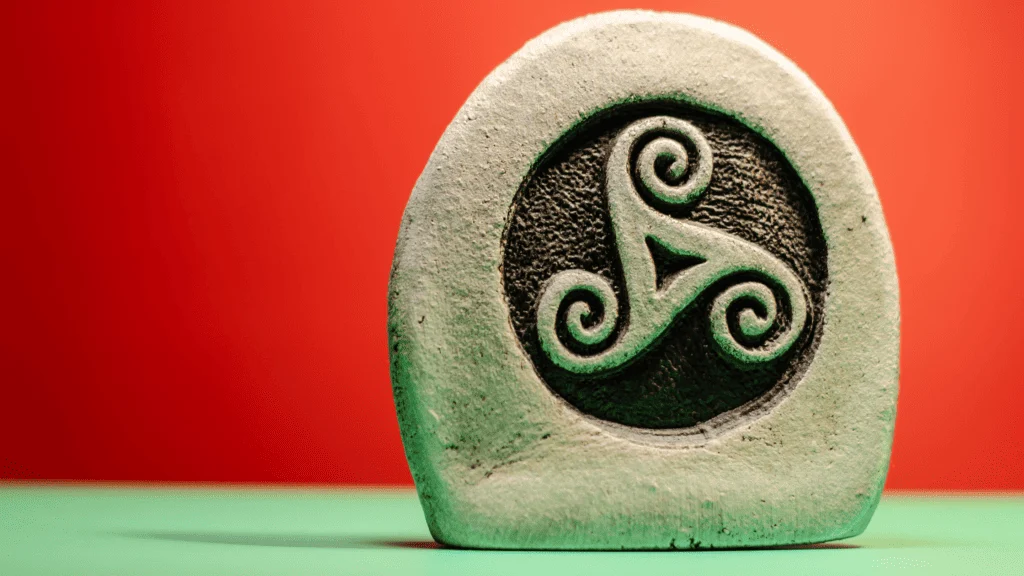
Ah, the time has come; my last Celtic Symbols article, “The Triskelion”, or Triskele symbol. Pronounced “Treeskeel or Try Skeel”
In this article, I will delve into the deep history, meanings, and significance of the triskele, unravelling the enigmatic threads that connect it to ancient wisdom and modern interpretations.
The triskelion or ”triskele” is also known as the tri-spiral or “Spiral of Life.” The three spirals in the triskelion are interconnected with no open ends, thus creating one continuous line. Each spiral turns in the same direction. The triskele, also known as the triple spiral, is a symbol deeply rooted in Celtic and Neolithic cultures.
What does the Triskelion represent? The triple spiral symbol represents balance, harmony and continual motion indicative of the flow of life and of the Earth in her seasons and cycles. This symbol is found on many ancient carvings, the most famous of which is Newgrange in County Meath, Ireland, which dates back to 2500 BC.
Did you know the triple spiral has been speculated to be the oldest symbol of spirituality? Often referred to by many as a Triskelion, its earliest creation dates back to the Neolithic era(10000 BC – 2200 BC), as it can be seen at the entrance of Newgrange, Ireland.
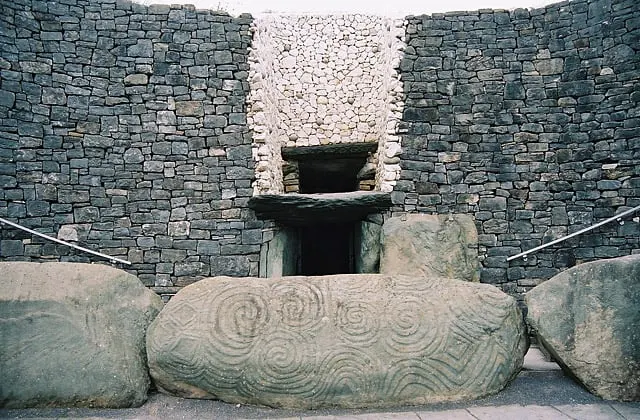
Triskellion: It can be seen at the entrance of Newgrange, Ireland.

But first, what is the difference between a triquetra and a Triskelion?
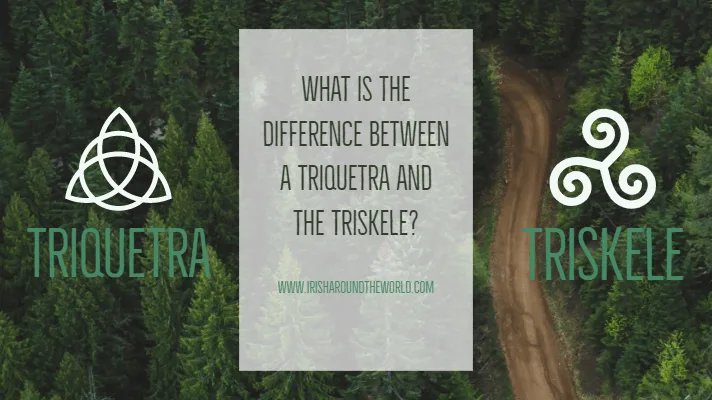
Don’t let their similarities fool you. They are quite different. I covered all about the Triquetra in this article.
Whether you are looking for a trendy tattoo or a designer piece of inspired jewellery, it is important to know the main differences between the two.
- From its pre-Celtic origins, the triskele has become widespread in Celtic art and architecture. Versions are found on ancient monuments across Ireland.
The triquetra and the triskelion are both ancient symbols with distinct designs and often carry different cultural and symbolic meanings.
- Triquetra:
- The triquetra, also known as the triple knot or Celtic knot, consists of three interlocked loops or arcs that create a continuous shape.
- It is often associated with Celtic and Norse traditions and is a symbol of eternity, unity, and the interconnectedness of various elements such as earth, water, and air.
- In Christian contexts, the triquetra can symbolize the Holy Trinity (Father, Son, and Holy Spirit).
- Triskelion (or Triskele):
- The triskelion, sometimes spelt as triskele, features three spirals or arms radiating from a central point, resembling a spinning or three-legged wheel.
- It is closely associated with Celtic culture and has been found in ancient Celtic art and artefacts.
- The triskelion can represent various concepts, including cycles of life, death, and rebirth; personal growth and evolution; and the balance of mind, body, and spirit.
While both symbols have a triple motif and are connected to Celtic traditions, they have distinct visual characteristics and can carry different meanings based on their historical and cultural contexts. The triquetra is more often associated with knotwork and unity, while the triskelion emphasizes movement and cycles.
The Triskele appearances throughout history(the distinct 3 arm symbol is visible throughout history)
As my studies of these ancient symbols have interested me, none has had a more diverse appearance than the Triskele.
Maybe you are impressed by the fact that the Triskele has appeared at the entrance to Newgrange, but it has also appeared all over the world!
Here are 6 of the main appearances of the Triskelion throughout history:
- Celtic Culture: The triskelion is closely associated with Celtic culture, and it can be found in ancient Celtic artefacts, such as coins and stone carvings. It likely held spiritual and symbolic significance for the Celts.
- Greek and Roman Art: The triskelion appeared in ancient Greek and Roman art, often associated with the Isle of Man (a British Crown Dependency). It was used as a decorative motif on pottery, jewellery, and coins.
- Sicilian Flag: The triskelion is a prominent feature of the flag of Sicily, an Italian island. It is known as the “Trinacria” and has been a symbol of the island for centuries. It is a symbol consisting of three bent human legs, making up the triangular shape of the island.
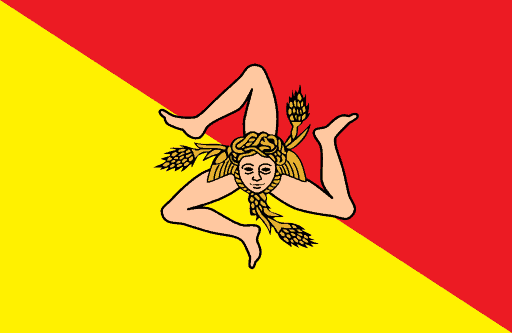
Myriam Thyes / Klone123, Public domain, via Wikimedia Commons
- Isle of Man: The Isle of Man uses the triskelion as its official national emblem. The three legs are accompanied by the Latin motto “Quocunque Jeceris Stabit,” which means “Whichever way you throw, it will stand.” The triskelion symbolizes the island’s independence and resilience.
- Modern Usage: The triskelion has also found its way into modern symbolism, often representing concepts like personal growth, progress, and evolution. It appears in various forms in contemporary art, tattoos, and jewellery.
- A triskelion is featured on the seal of the United States Department of Transportation.
- A triskelion shape is a basis for the roundel of the Irish Air Corps.
- A triskelion shape was used to design RCA’s “Spider” 45 rpm adapter, a popular plastic adapter for vinyl records.
- The Flag of the Isle of Man bears 3 legs based on the Triskele.
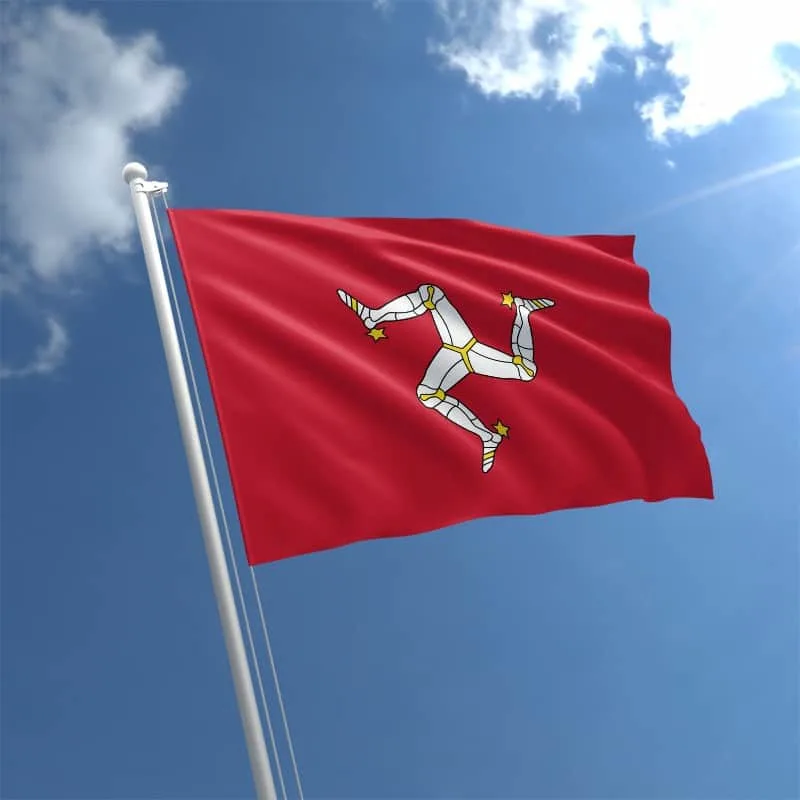
- You may also remember they used the Triquetra on Thor’s Hammer. The Triskelion was the base of S.H.I.E.L.D. before becoming unusable after a battle. Arranged for Project Insight, the tower would be trapped in a temporal fog and be found in Avengers Academy. Iron Man used a Hydra satellite to disperse the fog, allowing Director Fury to recommission the building.
- In the television series Merlin, it was used as a symbol of druids.
- Other Cultures: Similar three-arm spiral symbols have appeared in various cultures throughout history, including in Asia and Africa, although these may have different names and interpretations specific to their regions.
I find it incredible that you can find it on a jug in Egypt with the symbol and all over with the Celts.
Here is a picture of the Triskele symbol on a jug from Egypt dating back to 1400 BC!
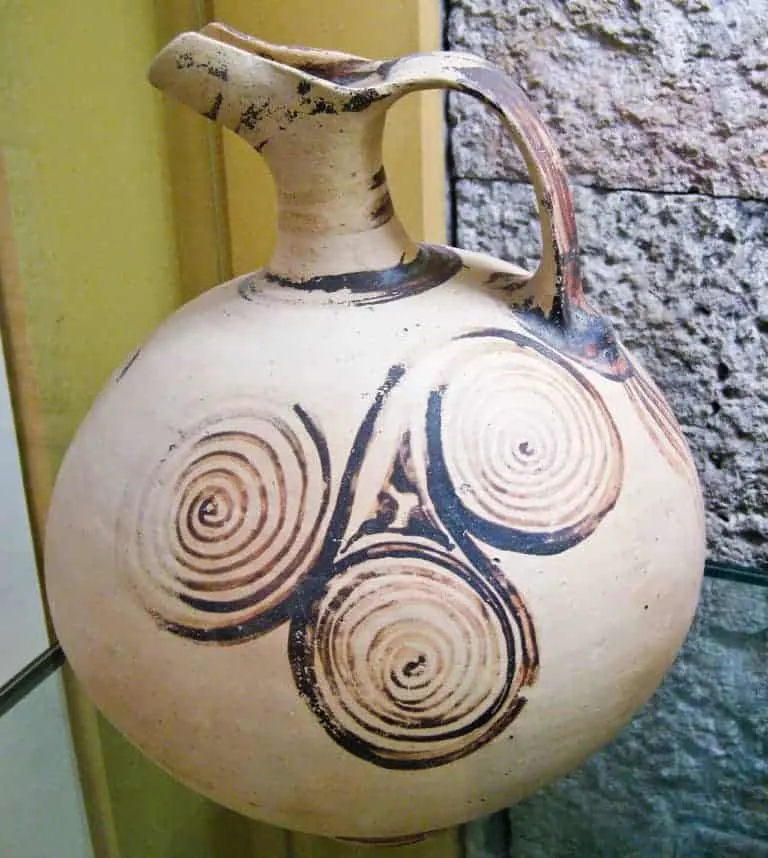
Beaked jug (ewer) decorated with triple spirals. Late Helladic III, 1400-1350 BC
You may know this symbol as the triskelion, but both terms come from the Greek words tri, “three,” and Skelos, “leg.”
- The spiral and the triple spiral are among the oldest spiritual symbols created by humans.
Familiar as an ancient symbol of Sicily, the symbol dates back to when Sicily was part of Magna Graecia, Greece’s colonial extension beyond the Aegean.
Pliny, the Elder, attributes the origin of the triskelion of Sicily to the triangular form of the island, the ancient Trinacria (from the Greek tri- (three) and akra (end, limb)), which consists of three large capes equidistant from each other, pointing in their respective directions, the names of which were Pelorus, Pachynus, and Lilybæum.
Could this symbol have a deeper meaning that perhaps we overlooked due to its simplicity? Your guess is as good as mine.

The spirals found on ancient tombs have been drawn in one continuous line.
When the triple spirals are drawn in this way, it has been speculated that this represents life and death.
Incredible, isn’t it?
Closing points on the Triskelion Celtic symbol:
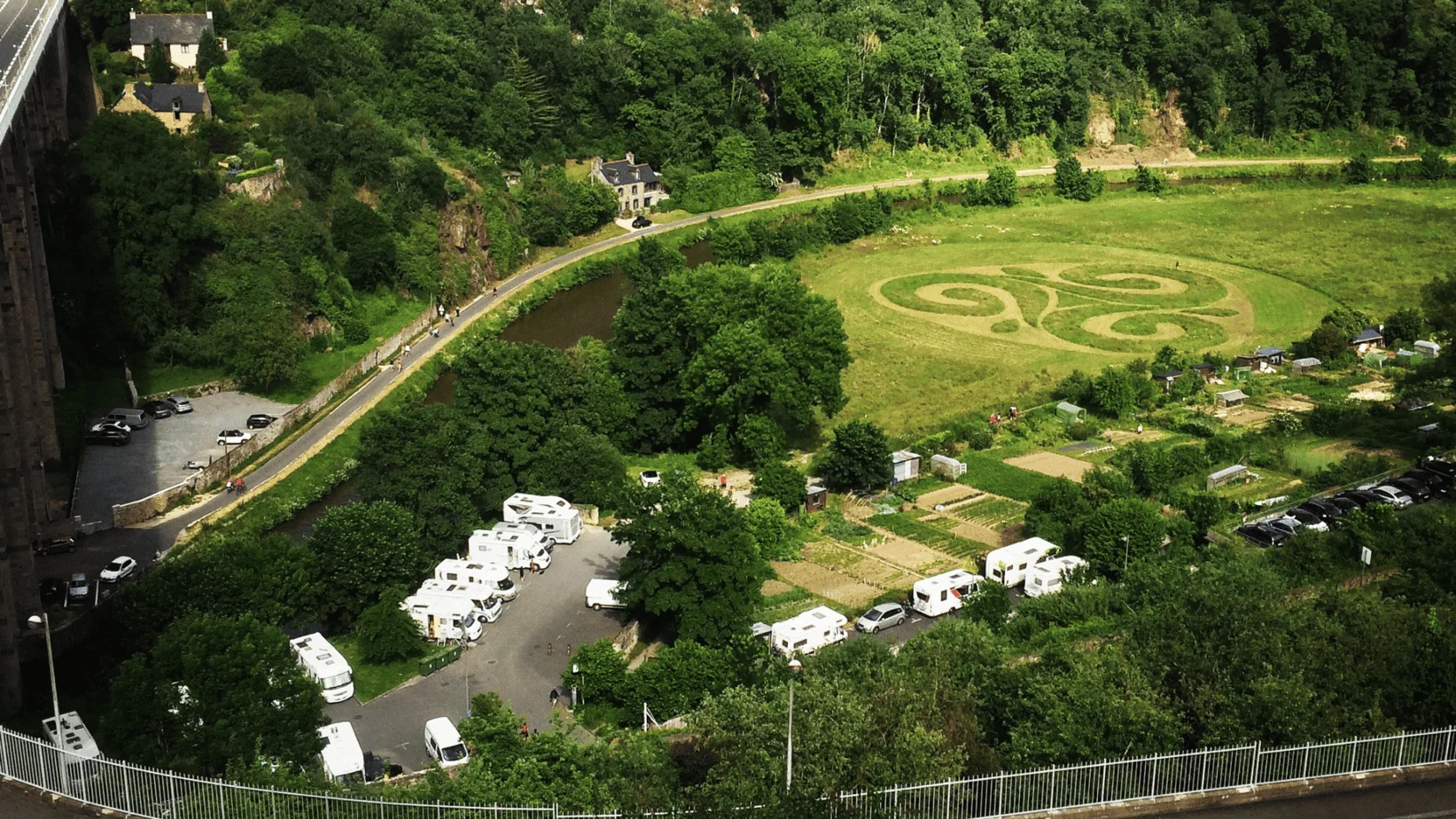
The symbol could be closer to you than you think!
In this final exploration of Celtic symbols, we’ve taken a deep dive into the heart of the Triskelion, also known as the Triskele symbol. Pronounced as “Treeskeel” or “Try Skeel,” this enigmatic emblem has unfolded its rich history, intricate meanings, and widespread appearances throughout time.
The Triskelion, or “Spiral of Life,” captivates with its three interconnected spirals, forming a seamless, unending line, all spiralling in the same direction. Rooted in Celtic and Neolithic cultures, this symbol represents balance, harmony, and the perpetual motion intrinsic to life and Earth’s seasons and cycles.
Delving into the Triskelion’s origins, we discovered its speculated status as one of the oldest symbols of spirituality, with its roots tracing back to the Neolithic era, around 10,000 BC to 2,200 BC. Its presence at the entrance of Newgrange, Ireland, a monument dating back to 2500 BC, only deepens its historical significance.
Drawing distinctions, we’ve clarified the difference between the Triquetra and the Triskelion.
Throughout history, the Triskelion has left its mark across diverse cultures and regions. From its Celtic origins to appearances in Greek and Roman art, its symbolism has adorned ancient monuments and modern contexts alike. Even to this very blog, you are reading right now!
It graces flags, seals, and popular culture, bearing testament to its enduring allure.
Notably, this symbol’s prevalence extends beyond the Celtic world, finding resonance in various cultures across Asia and Africa, each imbuing it with its own interpretations and significance.
The Triskelion’s mystery deepens as we unearth examples like a 1400 BC Egyptian jug featuring this symbol in one continuous line. Its presence worldwide prompts us to ponder its deeper, universal meanings.
In the end, the Triskelion, which may look to you once as a simple symbol, actually conceals profound complexities. Its spirals, drawn continuously, hint at the eternal cycles of life, mirroring our quest to understand its enduring significance. In the pages of history, the Triskelion dances across time and cultures, an ever-spinning wheel of symbolism, inviting us to contemplate its timeless wisdom.
A timeless symbol whose meaning has changed from century to century; I am just glad that it is still around today and still holds a wonderous thought into a deeper meaning.
Do you have any views on the Triskele/Triskellion? Comment below.
Thanks for reading, and do read my main post on Celtic Symbols if you haven’t already. You can find subtopics for each major symbol throughout the article.
And don’t forget to join my weekly dose of Irish(join here) that I send out every Friday straight to your inbox.
Thanks,
Stephen
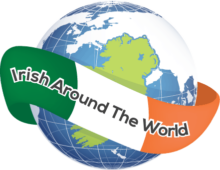

Catherine
Wednesday 15th of February 2023
Hi, bearing in mind that Ireland was a matriarchal society with a mother goddess it would be good to include a reference to the feminine elements. For instance, Brighid, the triple deity of Ireland, or the three sisters goddesses representing Ireland: Banba, Foladh and Ériu. Also the moon cycles waxing, full, waning. And of course the maiden, mother and crone.
Will Carter
Tuesday 30th of November 2021
I saw them at Newgrange in Ireland, and also on cave walls in Cuba , amongst other indiginous drawing. As with your ancient Egyptian pottery, I believe triskelion are to be found in other ancient cultures as well. My thought is, if all these ancient cultures share the triskelion that they at one time were together. I believe the triskelion may be a symbol of waves. After the Noahic deluge, the ancients would have held the Creator's deluge as the most significant yet spritual event in history (even if history for them was communicated via drawings and symbols). They would have recognized the Creator, the triune Spirit, is to feared and that each culture would do well to remember it lest the Creator destroy mankind from the face of the Earth again.
Irish Around The World
Wednesday 1st of December 2021
Wow, thank you Will for the detailed comment. Appreciate it.
Conark o'neal
Wednesday 24th of February 2021
I been more information so I may complete a theatrical thought that I have in mind I believe the clat may be the key to it
Aisling Brown
Thursday 23rd of July 2020
Since the Triskele dates back to the time of Goddess culture to me it is also representative of the Maiden, Mother, Crone.
Richard Dixon
Wednesday 6th of October 2021
@Aisling Brown, so true
Tine Jensen
Wednesday 16th of October 2019
Frankly, I was quite surprised when the triskele sort of manifested itself in my painting showed above. I knew of the symbol and for the most part its Christian connotations but I had never used it in any of my drawings or paintings before. The subject matter though is of a very spiritual kind so one must say that it is on point. Best Regards, Tine 'Heines' Jensen, Denmark
Richard Dixon
Wednesday 6th of October 2021
@Tine Jensen, Did you know that the ancient triskelion spiral is associated with the tribe of Dan and the Danaan people,that is where the Dan in Denmark comes from.